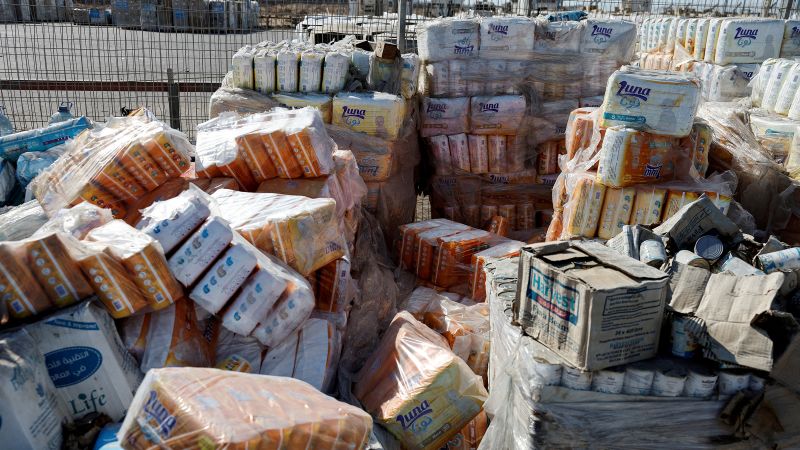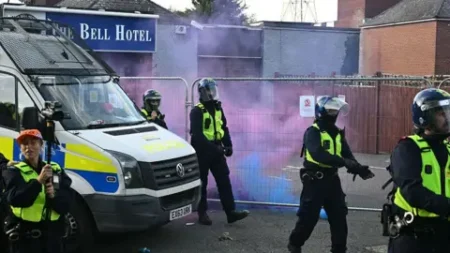The recent analysis conducted by the U.S. Agency for International Development (USAID) brought to light some significant findings regarding the distribution of humanitarian aid in Gaza, which starkly contrasts the prevailing narrative in U.S. governmental circles about widespread theft by Hamas of American-funded resources. This internal review concluded that there is no substantial evidence supporting claims about systemic interception of such aid by Hamas, challenging prior assertions made by various officials, including those during the Trump administration, which had often cited rampant misappropriation of humanitarian aid to justify initiating processes through alternate channels, such as the Gaza Humanitarian Fund (GHF).
Throughout the two-year study conducted by USAID, 156 incidents of reported waste, fraud, and abuse were scrutinized, specifically from October 2023 to May 2025. The study’s findings were overwhelmingly reassuring; only a minimal fraction, estimated at less than one percent, was attributed to loss, theft, or diversion. As noted in the presentation reviewed by CNN, there were no links identified between these anomalies and sanctioned groups or terrorist organizations, directly responding to various allegations made by U.S. officials.
The previous claims made by high-ranking members of the Trump administration painted a dire picture of Gaza’s humanitarian landscape, often stating that only private organizations like GHF could effectively deliver aid while avoiding theft by Hamas. State Department deputy spokesperson Tommy Pigott expressed a strong desire to ensure that aid reaches the vulnerable populations of Gaza without being looted, further advocating for enhanced support for GHF.
However, beyond the critical analysis revealing minimal instances of theft or diversion, the situation in Gaza remains gravely concerning. Reports indicate that over 1,000 individuals have been killed by Israeli forces while attempting to access humanitarian assistance. Many fatalities have been reported during the attempt to reach GHF sites, revealing the dire humanitarian crisis exacerbated by warfare and continued restrictions on aid delivery.
In response to the findings from USAID, a spokesperson from the State Department articulated an ongoing belief that Hamas was indeed engaging in looting activities, citing “endless video evidence” and intelligence reports to support this viewpoint. However, they did not provide specific examples of such evidence, leading to skepticism around the integrity of these claims. Accusations made against aid workers hinting at potential cover-ups concerning looting served only to complicate an already volatile environment.
In discussions concerning the diversion of aid, USAID’s inspector general office emphasized its ongoing efforts to monitor and ensure that resources provided do not fall into the hands of Hamas or any terrorist organizations. While investigations into specific incidents and allegations are indeed proceeding, doubts linger about the overall management of aid distribution. A former USAID official acknowledged that beneficiaries, including families tied to the Hamas government, might receive aid without it being classified as a systemic theft of humanitarian assistance.
The analysis also cited the Israeli Defense Forces (IDF) as being a significant factor in the loss of aid, with reports indicating that 28% of documented cases of aid theft or waste could be linked to their involvement. Factors such as airstrikes and enforced risky delivery routes have contributed to this reality. Partners responsible for distributing aid reported frequent incidents of looting occurring along delivery routes despite extensive prior coordination with IDF, further showing the complexities and challenges faced in delivering aid to Gaza effectively.
In summary, the USAID analysis presents a critical look at the claims of systemic theft of humanitarian aid in Gaza, unveiling the complexities tied to humanitarian assistance delivery amidst ongoing conflicts. It sparks an important discourse on the actual dynamics in the region, providing insight into the intricate obstacles non-governmental organizations and federal agencies are encountering as they seek to navigate through a tumultuous landscape dictated by deep-rooted political, social, and military strains. Such findings demand reflection as community advocates, governmental actors, and international bodies search for more coherent and humane means to assist those in need during one of the most severe humanitarian crises of our time.











